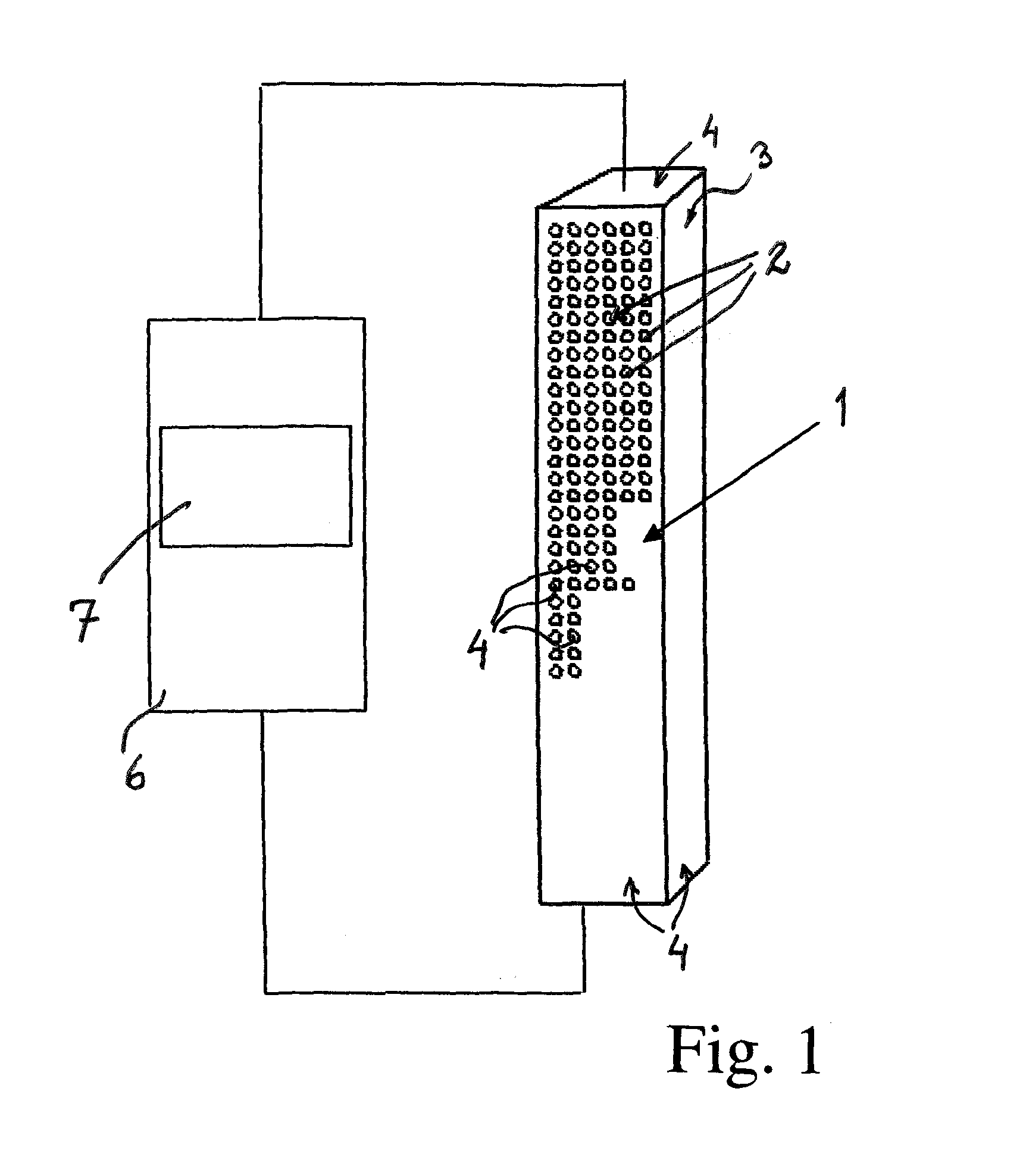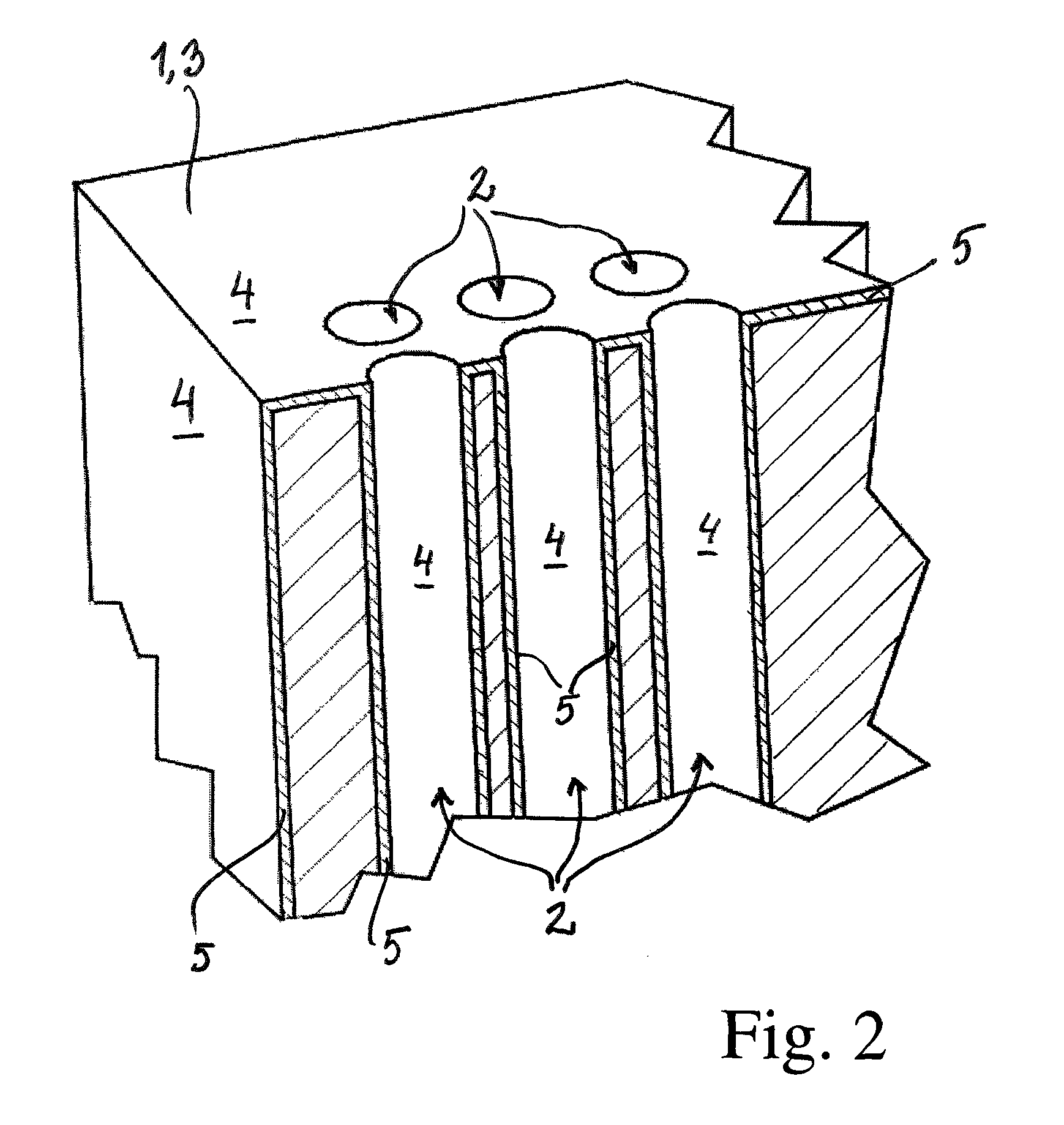Method for electrical flashover ignition and combustion of propellent charge, as well as propellent charge and ammunition shot in accordance therewith
a technology of propellent charge and ignition, which is applied in the direction of combustion ignition, lighting and heating apparatus, combustion process, etc., can solve the problems of high load weight, limited possible increase in velocity in respect of a given loading space, and high load weight. , to achieve the effect of increasing the load weight of ammunition, increasing the load weight, and increasing the load spa
- Summary
- Abstract
- Description
- Claims
- Application Information
AI Technical Summary
Benefits of technology
Problems solved by technology
Method used
Image
Examples
Embodiment Construction
[0060]FIG. 1 shows an embodiment of a multiperforated propellant component 3 incorporated in a propellent charge 1 and multiperforated by means of burning channels 2, here especially in the form of a rectangular propellant block, which, according to the invention, via a covering, electrically conductive surface coating 5 applied over certain or all free burning surfaces 4 existing for ignition, see FIG. 2, (also hereinafter referred to as the ignition coating), has been prepared for an instantaneous electrical flashover ignition, and which propellant component 3, together with other propellant components existing in the particular propellent charge 1, has been connected to a high-voltage source 6 (shown schematically) comprising a pulse unit 7 for the production of a pulsed plasma, which plasma realizes the desired instantaneous flashover ignition (hereinafter referred to as plasma ignition), a controllable progressive combustion of the particular propellent charge 1, as well as a, ...
PUM
| Property | Measurement | Unit |
|---|---|---|
| diameter | aaaaa | aaaaa |
| ignition temperature | aaaaa | aaaaa |
| electric current | aaaaa | aaaaa |
Abstract
Description
Claims
Application Information
 Login to View More
Login to View More - R&D
- Intellectual Property
- Life Sciences
- Materials
- Tech Scout
- Unparalleled Data Quality
- Higher Quality Content
- 60% Fewer Hallucinations
Browse by: Latest US Patents, China's latest patents, Technical Efficacy Thesaurus, Application Domain, Technology Topic, Popular Technical Reports.
© 2025 PatSnap. All rights reserved.Legal|Privacy policy|Modern Slavery Act Transparency Statement|Sitemap|About US| Contact US: help@patsnap.com



